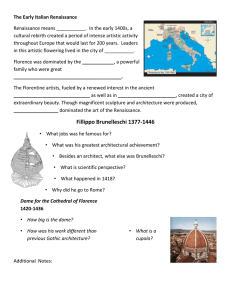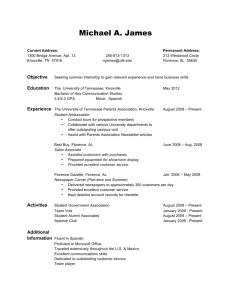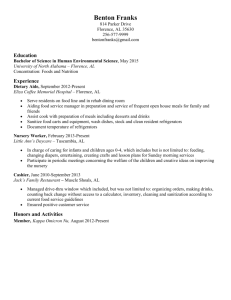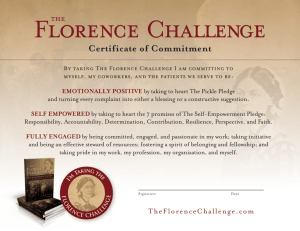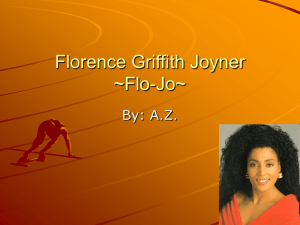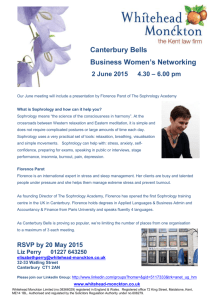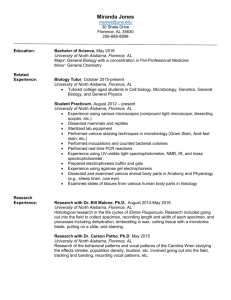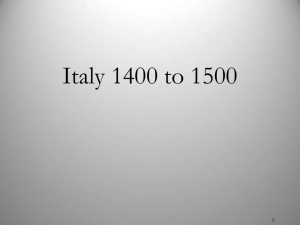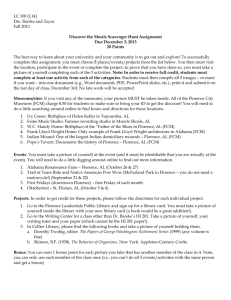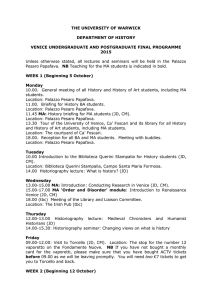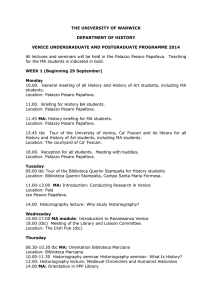The Florentine vs. the Venetian Renaissance in Art
advertisement
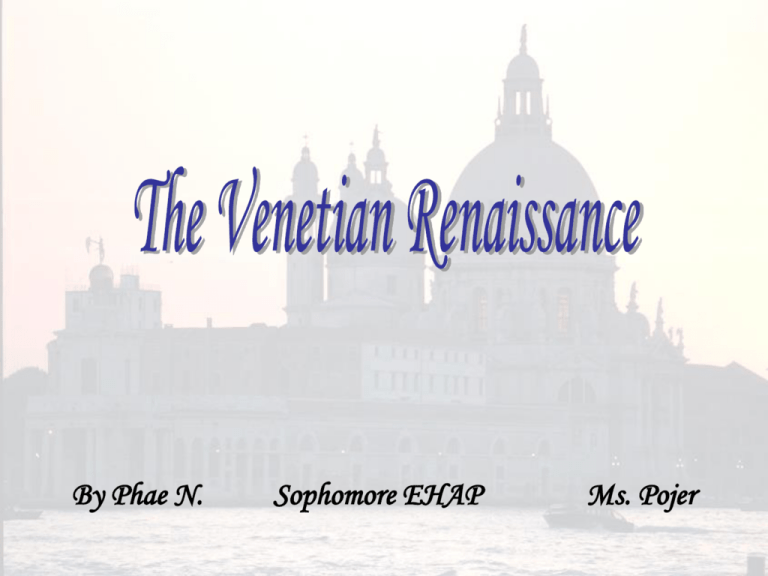
By Phae N. Sophomore EHAP Ms. Pojer And here’s Florence! Here it is! Located on the Adriatic Sea Major port city Further away from Rome than Florence Secular republic during the Renaissance Stable, powerful, and prosperous economy More incentive for noble patrons to support the arts. Alfonso d’Este. Guilds made sure artists were properly compensated. By 1425, Florence had a population of 60,000 A self governed, independent state Twelve artist guilds regulated trade Bases of commercial success Prosperity can from trading of textiles (mainly wool) Landlocked city Banking was the first source of income. Made patrons wealthy. First supporters of art. Lorenzo de Medici. Poetry Color Pleasure Beauty Intellect ۩ Classical and biblical themes Line, form, design Grandeur Heroic ۩ Perspective ۩ Antiquity ۩ Balance/Geometry ۩ Individualism ۩ Light/Shadow Sculptors: Painters: Architects: Donatello Botticelli Michelangelo ۩ Alberti Ghiberti Da Vinci Raphael ۩ Bruneschelli Born in Florence Worked in Ghiberti’s shop Three periods of work: Before 1425 (influenced by gothic work, but also classical and realist) St. Mark 1443-1466 (realism, focus on character) David 1425-1443 (Mostly with antiquity) Gattamelata Born in Florence Extremely vivid and detailed work Both a sculptor and goldsmith Sacrifice of Isaac Bronze Doors 28 panels Took 21 years to complete Gates of Paradise Took 27 years Real name: Alessandro Filipepi Member of the Medici family Adoration of the Magi • 1481-1482 Birth of Venus • 1484 Florence’s favorite artist Primavera 1482 Desire to paint realistically Architect, musician, engineer, scientist, inventor Mona Lisa (1503-1506) Last Supper (1495) Painter, sculptor and architect Major studies of human anatomy – helped him to form figures Most famous for David and his paintings on the Sistine Chapel In Florence, taught by Michelangelo and da Vinci. Lighting techniques and figure shaping. Marriage of the Virgin (1504). Entombment (1507). ۩ Florentine family – returned from exile in 1429 ۩ Thought of architecture as having sociopolitical basis ۩ S. Francesco Tempio Malatestiano (1450) ۩ S. Maria Novella (1458-71) ۩ Though never produced anything worth notice, he wrote several books about paintings and how to paint well ۩ Studied architecture after lost a competition to Ghiberti. ۩ Was asked to help raised the cupola of S. Maria del Fiore (1420-1436) ۩ When the council heard his suggestion, they thought he was crazy Light and color achieved drama Smooth brushwork – achieved velvety look Subject matter Mostly church themes Venuses Somewhat mannerist Stayed away from contraposto and tortured emotions Oil painting Durable in Venice’s moist climate Born in Venice Founder of the Venetian School of Painting Used light and color for transitions, not lines San Zaccaria Altarpiece (1505) Frari Triptych • 1488 Use of shapes is not what draws attention to the Madonna Alfonso d’Este commissioned Bellini paint five works for his estate in Ferrara, where his family ruled. Feast of the Gods was the last painting Bellini did before he died in 1516. The x-ray of the painting shows that the painting was, indeed, finished by Bellini, but painted over by Titian Painted over The quince Cybele is holding symbolizes marriage, and as Neptune’s hand rests on her thigh, the veiwer can wonder if they perhaps symbolize the Duke and his wife. Priapus and Lotis Real name: Tiziano Vecellio (1485-1578) Studied under Bellini and Giorgione Greatest painter of the Venetian School Bacchus and Ariadne Worship of Venus Bacchanal Notice the gorgeous skylines in the background Presentation of the Virgin (1539) Penitene Magdalene (1555-1556) Real name: Giorgio de Castelfranco Castelfranco is 30km northwest of Venice Some of his paintings were completed after his death Sleeping Venus (1510) The Impassioned Singer (1510) The Tempest (1510) Adoration of the Shepherds (1505-1510)
